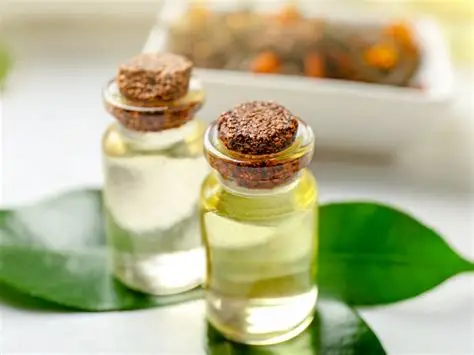In the world of natural remedies, few ingredients are as celebrated for their skincare benefits as tea tree oil. Hailing from the leaves of the Australian tea tree (Melaleuca alternifolia), this essential oil has a long-standing reputation as a powerful solution for breakouts. But does it really live up to the hype?
Before you reach for that tiny bottle, let’s explore what makes tea tree oil a potential hero for acne-prone skin, how to use it safely, and its limitations.
What Makes Tea Tree Oil a Skin Saver?
The main reason tea tree oil is so effective for acne is a compound called terpinen-4-ol. This powerful component gives the oil its antimicrobial and anti-inflammatory properties, making it a natural fit for fighting the root causes of acne.
- Antibacterial Power: Acne is often caused by the overgrowth of a bacteria called P. acnes. Tea tree oil’s antibacterial properties directly attack this bacteria, helping to reduce its population on the skin.
- Anti-Inflammatory Effects: Acne blemishes, especially those painful, red pimples, are a result of inflammation. Tea tree oil helps to calm this inflammation, reducing the redness and swelling of breakouts.
- Oil Control: While it doesn’t dry out the skin as harshly as some other ingredients, tea tree oil can help to balance oil production, which is a major factor in clogged pores and breakouts.
How to Use Tea Tree Oil for Acne (Safely!)
It’s crucial to remember that tea tree oil is highly concentrated and should never be applied to the skin undiluted. Using it straight can cause severe irritation, redness, and a burning sensation.
The Best Methods for Safe Use:
- Dilute, Dilute, Dilute: Always mix tea tree oil with a carrier oil, such as jojoba oil, argan oil, or coconut oil. A good rule of thumb is to use 1-2 drops of tea tree oil for every 12 drops of carrier oil.
- Use as a Spot Treatment: For active pimples, apply a diluted mixture directly to the blemish using a cotton swab. Do this after cleansing your face and before applying moisturizer.
- Mix with a Cleanser or Moisturizer: You can add a few drops of tea tree oil to your regular facial cleanser or moisturizer to incorporate it into your daily routine. Be sure to mix it well in your palm before applying it to your face.
- Try Products with Tea Tree Oil: Many companies now formulate skincare products with a safe, diluted concentration of tea tree oil. Look for cleansers, toners, and moisturizers that list tea tree oil as an ingredient. This is often the safest and easiest way to use it.
What About Acne Scars?
While tea tree oil is a fantastic option for treating active acne, it is not a direct treatment for acne scars.
- What are Acne Scars? Scars are permanent changes to the skin’s texture that form after a severe blemish has healed. They are caused by damage to the underlying collagen.
- How Tea Tree Oil Helps (Indirectly): By preventing severe breakouts and reducing inflammation, tea tree oil can help to prevent new scars from forming. The less severe the acne, the less likely it is to leave a scar behind.
- Treating Existing Scars: To treat existing acne scars, you need ingredients and procedures that stimulate collagen production and resurface the skin. These include:
- Retinoids: Can help to fade dark spots and improve the texture of atrophic (indented) scars over time.
- Vitamin C: A powerful antioxidant that can help fade hyperpigmentation (dark spots) left behind by acne.
- Chemical Peels, Microneedling, and Laser Therapy: These professional treatments are often the most effective for treating deep or severe scarring.
The Verdict: A Great Addition to Your Routine, with a Catch
Tea tree oil can be a highly effective, natural solution for treating active acne, especially for those with oily or combination skin. Its antibacterial and anti-inflammatory properties make it a powerful tool for calming breakouts and preventing new ones.
However, it is not a magic cure. It will not work on existing acne scars, and it’s essential to use it with caution and proper dilution to avoid skin irritation.
For a clearer complexion, consider adding a properly diluted tea tree oil mixture or a tea-tree-infused product to your routine. But for stubborn scars, it’s best to consult a dermatologist for professional advice and treatment options.
